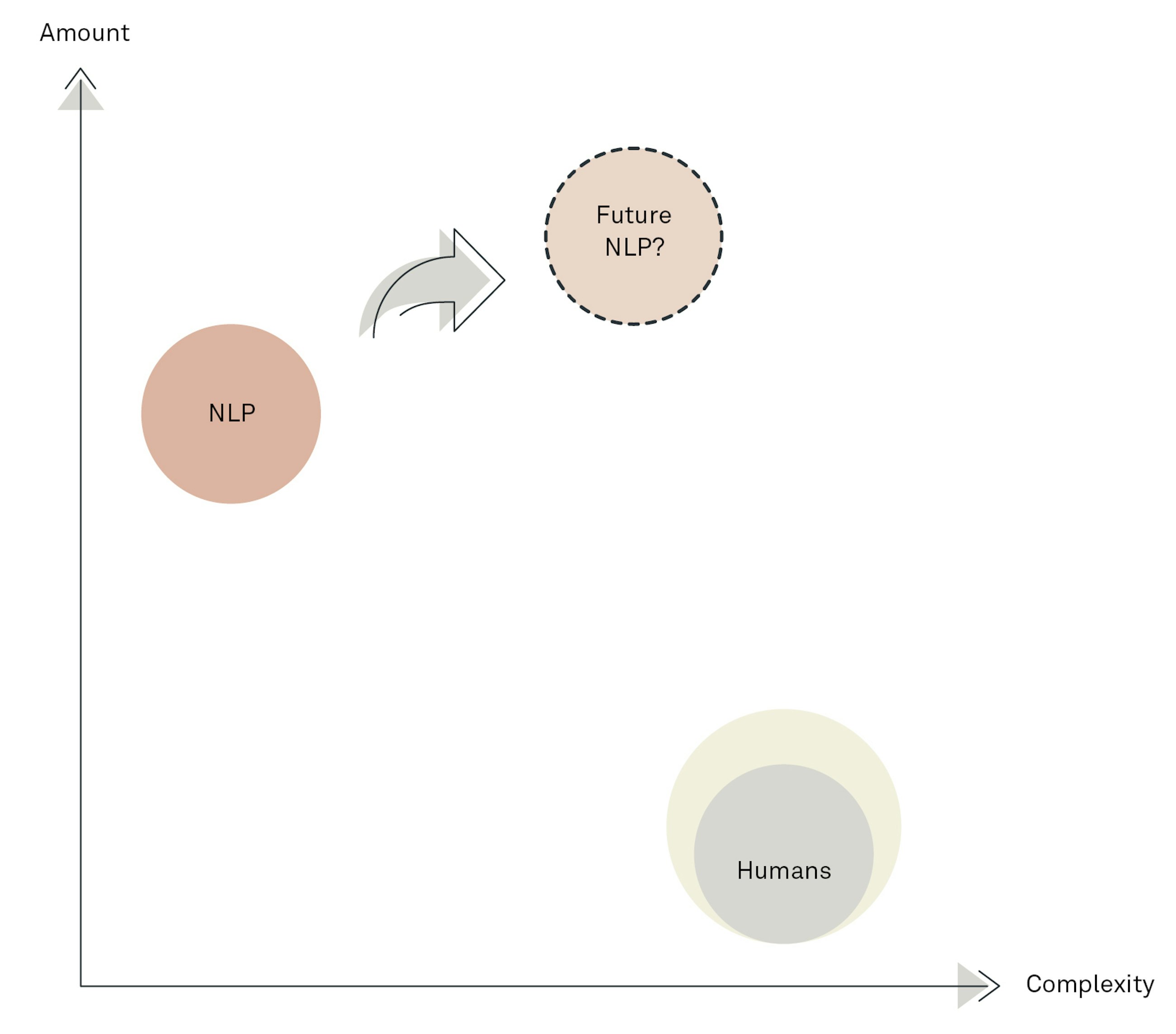- handling text as data
7 April 2022
Data from audio and text contains a huge potential for generating insights arising through traditional channels. Until recently, this potential has been rather inaccessible, but working with natural language processing and analysing text and speech as data, we can now start generating and acting on these new insights.
Introduction
The big data revolution has been raging for a few years. And at roughly the same pace as organisations have begun setting up structured data warehouses for reporting purposes, new and exciting data sources such as text and audio are to a higher extent seen as valuable sources of information. These data sources hold a potential for creating value in everything from customer journeys to public services, and they often contain value and insights beyond what traditional tabular formats do. In other words, audio and text data contain a huge potential for generating – and acting on – insights arising through traditional channels that have not traditionally been as accessible as they are right now.
What is this guide, and who is it for?
In its entity, this guide is for people who can envision some of the potentials that lie embedded in text or audio data but who need more comprehensive insights into potentials, requirements and/or methods. Covering these topics, we know that it is necessary to address complex concepts and their impact, and we acknowledge that certain topics may be (too) difficult for the uninitiated. Therefore, we have decided to split the guide into two parts:
The first part is aimed at those recognising natural language processing (NLP) as a fast-emerging field but who still wonder what sort of text is relevant, which use cases are possible, where they can find text data and how the field has progressed – but who at the same time do not need to understand how or why computers interpret text as they do.
The second part is aimed at the technical side of NLP. It is for readers who are curious about the technical aspects such as how to move from text to 0s and 1s that are readable by a computer and how to approach the complexity that inherently lies in working with text and speech as data.
Why this guide?
At Implement, we are experiencing an increased demand for data science competencies in general, and the analysis of text as data (often labelled as natural language processing or NLP) is a big driver of that.
What is NLP, and how can it be approached?
In this first part of the guide, we will be covering:
- What natural language processing is.
- How broad the field is, and how it has changed over the past years.
- How NLP can be approached from a data source perspective.
First, though, we should agree on when to use NLP – and maybe most importantly, when not to. As with so many other things, we experience a trade-off between approaching a task manually versus deploying advanced analytics.
The true value of text analytics lies in the analysis of very large quantities of text, but current NLP solutions cannot grasp the complexities of language to the same degree as a human reader would be able to. Thus, with the use of NLP, we must sacrifice some precision in the analyses, but we are able to conduct our analysis over thousands, or perhaps even millions, of documents. In addition, we see larger and better language models being published at a rapid pace, so perhaps the future of NLP looks like what is depicted in the figure below?
Despite previous warnings, the field has come a long way in recent years. Across our projects, we have already seen natural language processing being used to realise some of the following potentials:
- Comparing very large quantities of text to find similar documents.
- Identifying which products are being negatively mentioned on critics’ websites.
- Transcribing and segmenting customer contact based on what the customers need, e.g. help with billing, sales etc.
- Identifying whether a (collection of) document(s) is compliant from a regulatory standpoint, mentioning the required entities.
- Creating a decision support tool that is based on historical case facts, yielding a consolidated overview to increase the quality of future case decisions and processes.
However, NLP is not only becoming more valuable in organisations and professional work. As a matter of fact, you probably encounter NLP several times a day:
- When contacting the website on which you ordered a pair of shoes where a chatbot can look up and return your order status.
- When you search on Google, advanced NLP models enabled by semantic search ensure that the responses you are looking for are found and are at the top of the search results.
- You probably receive less spam in your email inbox because NLP enables advanced spam filters.
- Your doctor’s office probably transcribes the doctor’s notes and maybe even generates precise medical assessments based on a description of symptoms.
Many organisations have large – and steadily increasing – amounts of natural language data that are ready and waiting. Examples include public sector requirements for documentation, e.g. of meetings with citizens, decisions regarding citizens’ rights, hospital logs and much more. In the realm of private organisations, customer contact often occurs via chat(bots), phone calls and/or emails to and from customers.





